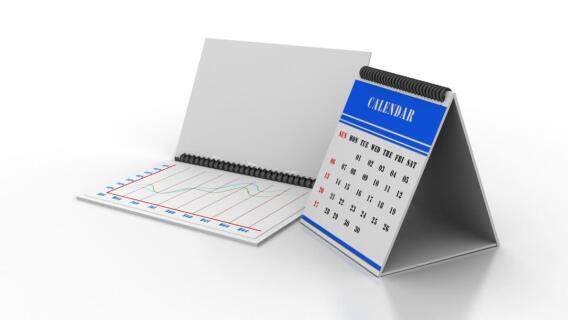One of the best parts about investing in dividend stocks is that they pay you to own them. Every three months or so (in most cases; some dividend stocks will pay you monthly), your dividend stocks will deposit some extra cash in your investment account.
If you own enough dividend stocks, this cash can actually be enough to live on, and many investors do.
As with any income source, it’s nice to keep your dividend income as regular as possible so you aren’t strapped for cash between payments. That means you have to own stocks that pay dividends in different months, so you don’t get a bunch of big checks in December and none in January.

Get My Free Report Now

Get My Free Report Now

Get My Free Report Now

Get My Free Report Now
Investors can use a tool called an ex-dividend date calendar to find stocks that pay dividends in all 12 months, spreading their dividend income out evenly over the year.
An ex-dividend calendar tells you the date that each stock in your portfolio (or stocks you’re considering buying) will pay its dividend, as well as when the stock trades ex-dividend.
What Is an Ex-Dividend Date?
What does trading ex-dividend mean? That’s one of the most common questions about dividends I hear from subscribers.
It’s important for investors who buy dividend-paying stocks to understand what “ex-dividend” means and how the various dates related to dividend payments—ex-dividend date, record date and payment date—really work.
The ex-dividend date is the first day the stock trades without its dividend, thus ex-dividend. The ex-dividend date is the date by which you have to own the stock to get the payment. That means you have to buy before the end of the day before the ex-dividend date to get the next dividend.
The day before the ex-dividend date is really the all-important date for investors to know.
So if a stock’s ex-dividend date is June 20, only those who own it on June 19 will receive the dividend.
But there are a few other dividend-related dates you should know.
The record date is the day the company announces when a dividend will be paid to “shareholders of record as of” some date. Because it takes two days to reliably become a shareholder of record, the ex-dividend date falls two days before this day declared by the company.
The payment date is the day the dividend will actually be transferred into your brokerage account. It’s usually about a month after the ex-dividend date, although for some funds, it’s as little as two days after the ex-date.
When a stock is trading ex-dividend that means its ex-dividend date has already passed but the dividend payment has not been made yet.
Can You Game the Dividend Capture Effect?
Because this system is not exactly straightforward, a lot of investors think there must be some way to game the system and rake in lots of dividends without holding lots of stocks. There are two reasons this isn’t generally feasible. The first is trading fees, and the second is the “dividend capture” effect.
The dividend capture effect refers to the fact that a stock’s price tends to fall by the amount of the dividend on the ex-dividend date.
If XYZ stock pays a $0.10 per share dividend, it should theoretically open 10 cents lower on its ex-dividend date. So if the stock closed at 40 the day before the ex-dividend date, you’d expect it to open at 39.90.
In practice though, the dividend capture effect doesn’t always occur, or isn’t always equal to the exact amount of the dividend, not least because the stock price may be up or down for different reasons.
So if you buy before the ex-dividend date, the stock might drop by the amount of the dividend, but you will receive the dividend payment a few weeks later.
If you buy on or after the ex-dividend date, you might get a slightly lower price, but you won’t receive the next dividend payment.
There isn’t a time when you can buy that would mean you participate in the price drop but not the dividend, so you don’t have to worry about that.
By the way, I provide a dividend calendar for every month to members of Cabot Dividend Investor, my premium investment advisory.
If you’re interested in building your own portfolio of stocks that pay you every month, just click here to learn more about Cabot Dividend Investor.

Learn More

Learn More

Learn More

Learn More
*This article is periodically updated to reflect market conditions.

